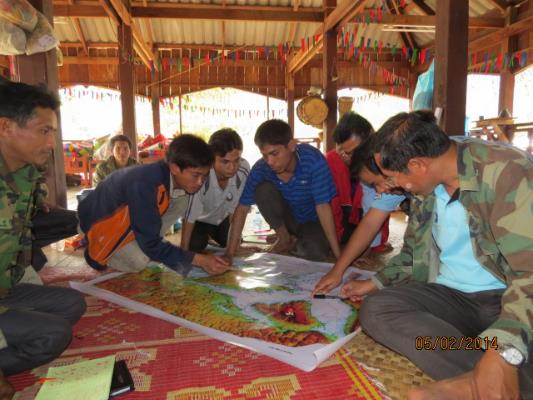SMART data collection tool
Village Rangers training on GPS and data recording form
SMART is a ranger based data collection tool specifically for managing patrolling activities. As it is a data collection tool for spatial data, the database was re-designed to not only serve the patrolling needs but also the wildlife monitoring and location data gathering needs. Training was given to government volunteer staff to work with the software and adapt the database, and to rangers on the use of the data booklet. Trials were done and the database and data booklet adapted to requirements from rangers and researchers, i.e. small size booklets, wildlife per category (indicator, key, hunted).
To be able to collect data systematically and report important features to management, a tool like SMART is ideal. As the data gathering is done by staff with limited reading/writing capabilities, we simplified and coded the booklet, with the codes on the front and back of the booklet. The data entry (and reporting) can be done by few experienced staff. As rangers stay in the field for up to 6 days and electronic data gathering equipment does not have this kind of battery power, a more sophisticated system is not possible.
For more sophisticated geographical analysis and mapping, the data is transferred to a GIS system.
The tool is promoted by major players in the conservation world and as such is seen by the partner organizations as a tool that is acceptable.
The tool is free and thus, besides training, no extra costs are necessary for software licenses.
The very limited amount of data before the adoption of SMART and the lack of qualified staff to manage the previous software made the change easy. It is possible to transfer data from an old system into SMART.
There needs to be an absolute minimum of one highly trained staff member who is responsible for entering the data, analyzing the results and creating the reports for management. More people is better as regular sharing of the database prevents data losses. Training of the staff responsible for SMART takes time as it is complex.
Providing information to management creates awareness and results over time in further requests for information. This motivates those involved in data gathering (the rangers), analysis and reporting (PA staff).
It is necessary to be flexible at the start of the usage of the tool as to be able to adapt to the data gathering needs. This requires several rounds of updates and trials; the database should be kept flexible. Training of rangers on the data booklet needs to happen several times and regular feedback of patrolling results increases effectiveness.
